Has the massive world of Noritake china recently grabbed your interest? Are you looking to get your hands on the rarest and most valuable antique china pieces to add to your collection? Whatever the case is, you’ll be glad to know that you’re in the right place because we’ve got just what you need!
Noritake china is a type of antique white porcelain that nearly every china collector of the modern era is well aware of. This is arguably one of the toughest and highest quality ceramics produced in the history of pottery. Noritake chinaware continues to be highly desirable to collectors, primarily because of its unparalleled beauty, incredible durability, and rich history.
If like many Noritake china enthusiasts around you, want to start your very own collection, then there are some things that you need to be aware of. You need to know what the term “Noritake china” really means and its historical importance that is known to attract collectors from all across the globe. Additionally, you also need to be aware of the most popular Noritake china patterns as well as how you can identify them in order to determine the value of Noritake china pieces in today’s market.
Fortunately for you, we’ve got everything you need to know right here in this guide. So without further ado, let’s get straight into the topic!
Table of Contents
History Of The Noritake Company
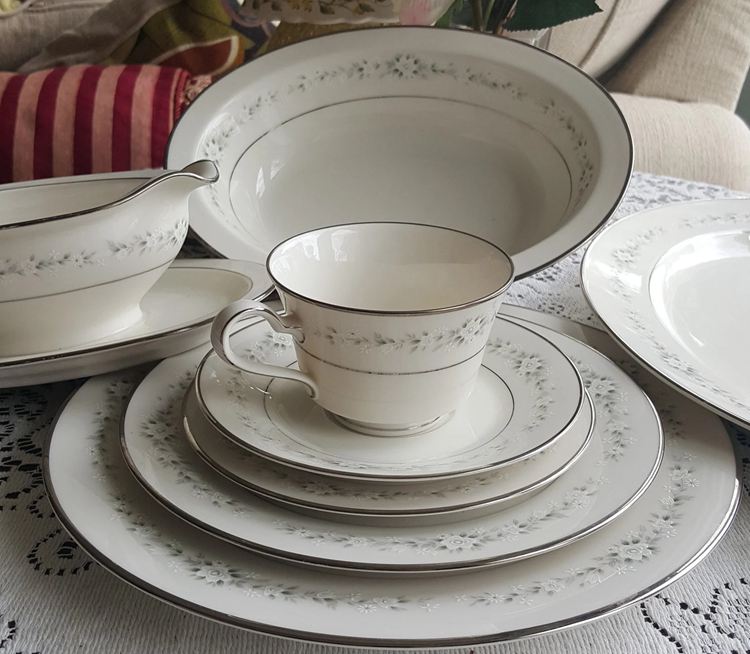
If you want to fit in the Noritake china enthusiasts community, then you need to enhance your knowledge about the history of Noritake china and be well aware of where it originates from. Noritake china basically refers to porcelain produced by the Noritake company ltd., which is a very well-known china manufacturing company with high repute in the industry.
The Noritake Company ltd originated in 1876 under the leadership of Ichizaemon Morimura and Toyo. The company was initiated in the form of an antique shop named Morimura Brothers, which originally dealt with the production of decorative pieces before getting involved with cutlery or dinner plates for the western market.
The shop was met with instant success and the brothers soon began to explore other ideas and products for their American customers. During this time, china and porcelain were peaking in popularity as nearly every household had been using them as decorations or for other practices uses, including dining, washing, and more. Most European factories and manufacturers had ceased the production of porcelain, which eventually lead to greater demand and less production before Noritake china joined the market.
In 1889, one of the two pioneers of the Noritake company ltd., Japanese businessman Ichizaemon Morimura paid a visit to the Paris World Exposition and took an instant liking to the fine quality of French porcelain that was exhibited there. The Morimura brothers got the idea of producing fine china for the U.S. market and bought a factory in Japan. The brothers began to hire porcelain experts to learn about the production of china and porcelain before eventually buying a ceramics factory in Noritake, Takaba-village, Aichi, Japan. This began to the production of Noritake china, which is known today to be one of the best and most valuable collectible items in the antique pottery industry.
The company introduced highly unique and interesting hand-painted patterns into the industry, which greatly appeal to antique collectors of the modern era. The Noritake company still produces dinnerware, which is incredibly popular amongst the massive community of porcelain enthusiasts.
How To Recognize The Noritake Stamp?
If you’re planning on becoming a Noritake china collector, then it’s essential for you to understand how you can recognize Noritake pieces. This will help you distinguish between original antiques and modern remakes with no actual importance or value. Additionally, this will also give you an accurate idea of the age of fine china decor products, allowing you to understand their expected value and worth in the market.
The primary factor that can be used to instantly recognize a porcelain piece as Noritake china is the Noritake stamps that are imprinted on their products. Over the years, Noritake backstamps have continuously changed for collectors to identify the period that particular china belongs to.
The first Noritake stamp contained the words “Hand Painted Nippon” along with a maple leaf logo. These porcelain pieces date to somewhere around 1891, long before the Morimura brothers bought their own porcelain production factory. Most pieces of this time were known to be productions of Nippon Toki Kaisha ltd. that were originally produced by other manufacturers and decorated by artists from the Morimura brothers.
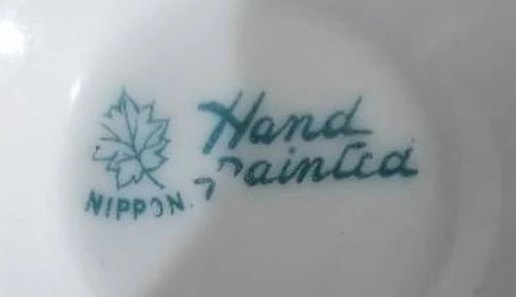
In 1906, the Noritake company began dealing in royal crockery. A major example was the bat-shaped china marked with “Royal Sometike Nippon”.
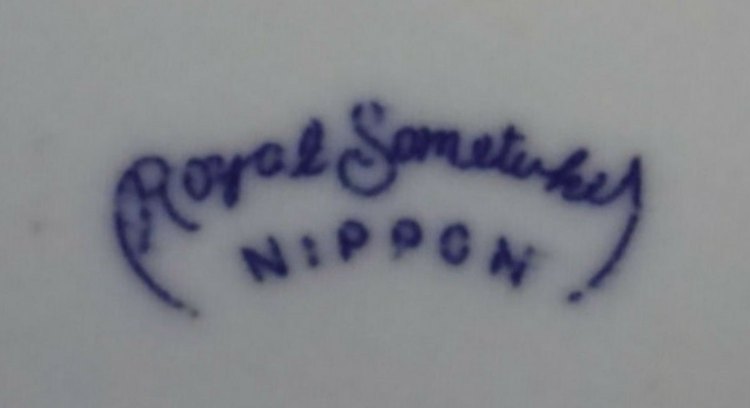
Noritake “Maruki” marks were invented in 1908 and were a major improvement over older common marks. These marks included a tree or a spear along with a circle that symbolized peaceful settlements.
In 1911, the company mark officially changed to “M in wreath”, which represented the family name “Morimura”. This stamp was found in a variety of different colors while previous stamps had no such color schemes.
Other popular marks used til 1921 consisted of “Noritake”, the symbol of a factory, and the previous “M in wreath” marks. Newer Noritake collections also made use of the words “Hand Painted” and “Nippon”. In 1921, Japan implemented import regulations requiring the word “Japan” to be used on porcelain products. Therefore, pieces with the word “Nippon” are likely to be dated before 1921 and are expected to have a higher Noritake china worth than newer Noritake collections.
From 1921 to World War II, Noritake pieces were stamped with the words “Japan” or “Made in Japan”.
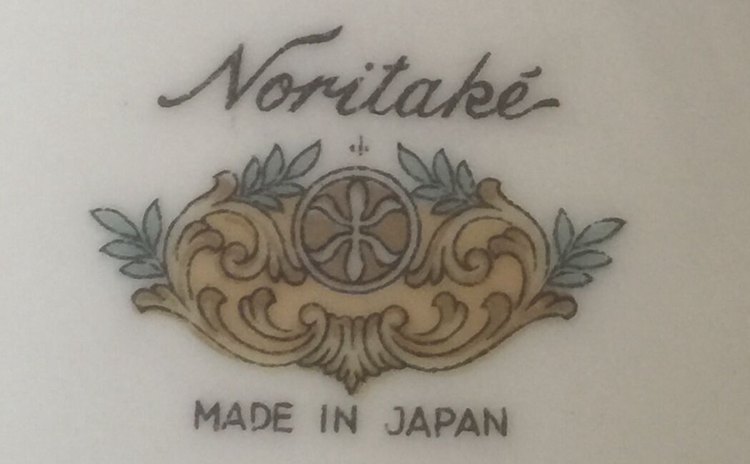
Following World War II, these marks were replaced by “Occupied Japan” or “Made in Occupied Japan”.
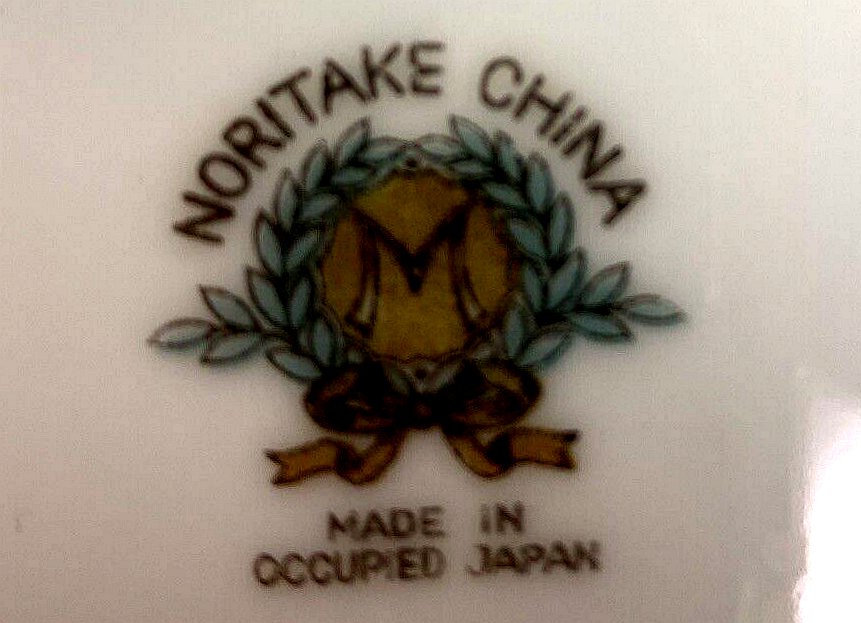
After 1953, the original trademark was once again bought by the company and was implemented on newer products after replacing the “M” with an “N” in the wreath.
Various Noritake china pieces were also known to have the exact date of manufacture of the product imprinted on it. After performing a bit of research, you can probably identify the mark that was used on that piece and also understand its worth to collectors and dealers.
Most Popular Noritake Bone China Patterns
Over the centuries, Noritake has released numerous different designs and patterns into the porcelain industry, some of which prove to be highly valuable to collectors and traders of the modern era. As a Noritake china collector, you need to have some level of knowledge about the china patterns that this company is known for. Additionally, you also need to be able to identify a Noritake china pattern in order to accurately determine the value of Noritake china in the market.
With that said, here are some of the most popular Noritake china patterns as well as tips that you can use to identify them.
Noritake Lusterware
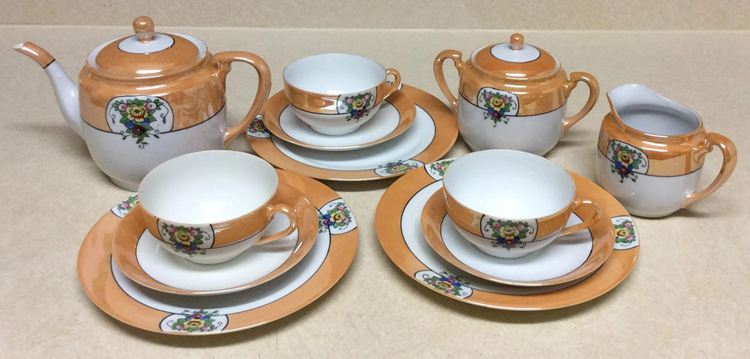
Noritake lusterware is arguably one of the most common Noritake china patterns that you are likely to come across multiple times during your journey as a collector or antique dealer. Lusterware is a pretty ancient technique of decoration of pottery, involving the addition of a metallic oxide onto a base color. This decoration process gives the lusterware a somewhat iridescent quality which greatly increases its visual appeal and attracts collectors.
Noritake sets with this pattern typically come in color schemes of white, blue, and gold. Other rare pieces may also feature other unique and intriguing color schemes that raise their value in the market. Decorations found on these china pieces are typically hand-painted and go along perfectly with the rest of the pattern. Different china shapes with this pattern include jam jars, china ashtrays, salad plates, teacups, saucers, bowls, and vases. The Noritake lusterware pattern is ideal for beginning your collection as it is readily available in today’s market and is cheaper relative to other options.
Azure
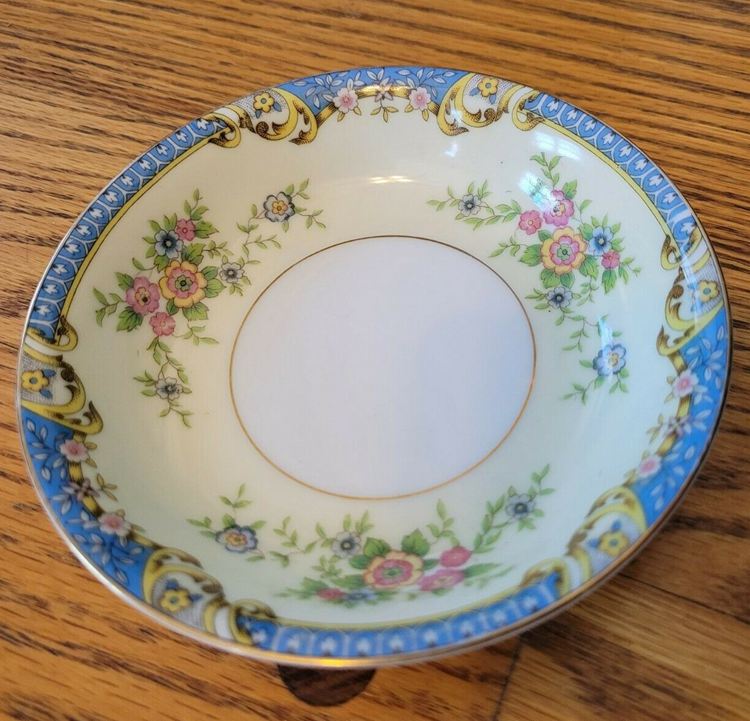
Azure, or Azalea, is known by collectors and traders to be the most popular Noritake china pattern throughout the centuries because of its unique design and unparalleled visual appeal. This pattern consisted of white, gold, and pink flowers on nearly every single china piece produced with this pattern. The various Noritake china shapes that utilized the Azure pattern consisted of teapots, dinner plates, bowls, vases, and many more!
Originally, Azure china pieces were sold in 1915 through the Larkin Company catalog on the basis of a collaboration with Larking and Noritake. Following this, Noritake china pieces became incredibly popular with many collectible Noritake sets being sold in the market for several hundreds of dollars. Pieces with this pattern may range from anywhere between $6 to up to $1500 primarily dependent on the condition, rarity, and age of the piece.
Tree In The Meadow
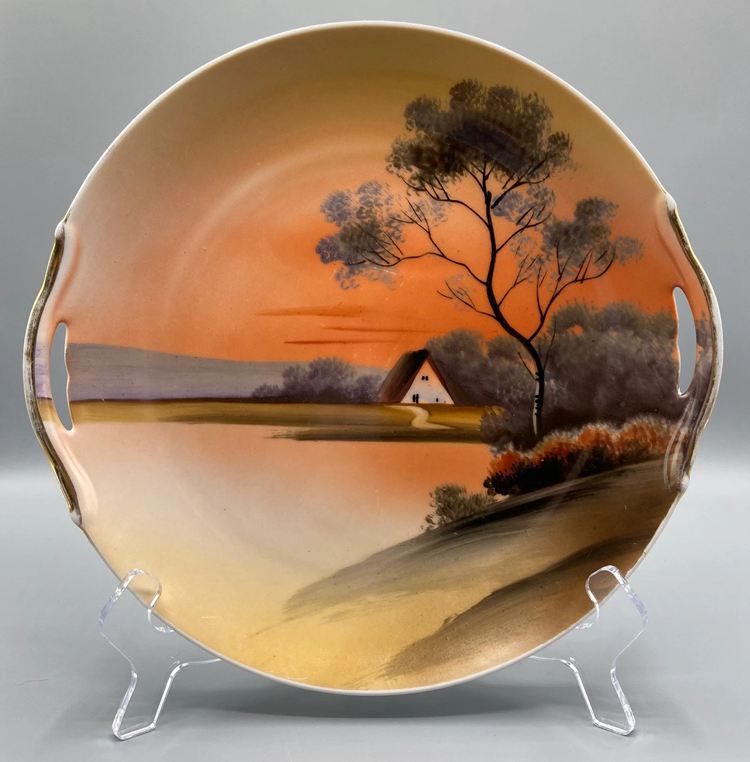
Experts refer to the Tree in Meadow pattern as the most attractive and intriguing china pattern that is likely to catch the viewer’s attention and interest at first glance. Its unique and bold color scheme allows it to stand out from other popular patterns, making it the ideal addition to your antique Noritake china collection.
The pattern was initially hand-painted in the 1920s under the official name “Scenic”. Later, the pattern name was changed to “Tree in Meadow”, which gives an accurate representation of the design that the pattern comprises. Pieces with this pattern contain bowls, plates, jam jars, and various other items. Normally, you will find these pieces priced at anywhere around $20; however, rare items are expected to go as high as $250 or more. They are easily accessible from online retail stores, such as eBay or Etsy, or antique dealers in your area.
Pattern 175
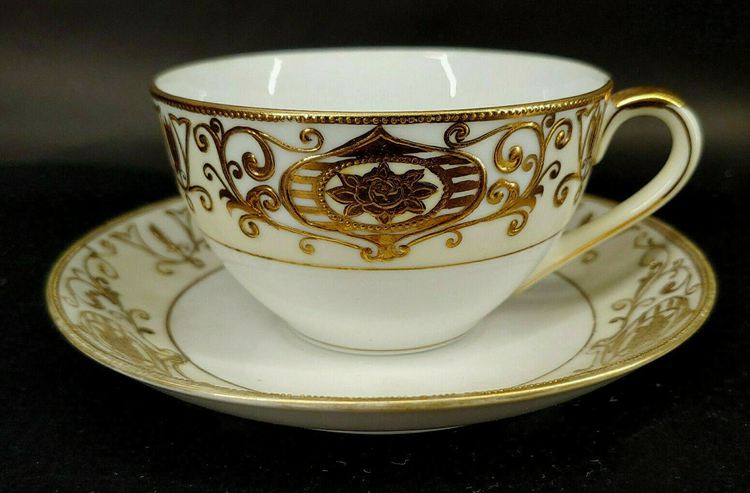
Pattern 175, otherwise known as Gold and White based on its color scheme, was originally released in 1906 and production continued till 1992. The pattern gave a somewhat luxurious and rich look to the pieces; however, it proved to be an affordable and easily accessible design. Another name used to refer to this pattern is “Chrismas Ball”; however, various other designs and patterns are also associated with this name.
This pattern is typically available in the form of butter dishes, dinnerware, tea sets, and more! The primary highlight of this pattern is its impressive design and the lasting impact that it leaves on viewers. The pattern is relatively cheap with pieces going for as low as $10. Rare pieces can go as high as several hundreds of dollars. All in all, it would certainly prove to be a great addition to your collection.
Rarest Noritake China Pieces
If you’re looking for rare Noritake bone china pieces to add to your collection, then we’ve got something that you might be interested in. Here are some of the rarest and most valuable Noritake china pieces in today’s market that you can buy online.
Hanaginsai Yuri
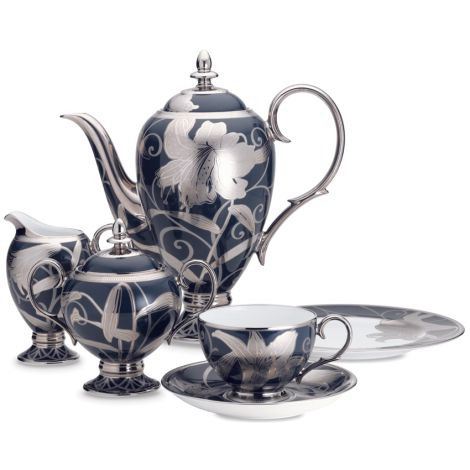
The Hanaginsai Yuri is an exquisite tea set that represents the Art Nouveau style, a fairly popular style of the 20th century. The design produces a highly sophisticated look with the help of hand-drawn lily petals and an appealing blue and metallic color scheme. The entire collection is up for grabs on the Noritake official website for a price of $2,000. Different components of the collection can also be purchased separately for their corresponding prices; Creamer for $1,000, Cups for $200, and Salad Plates for $500.
Noble Ensemble Gold 60Pc China Set
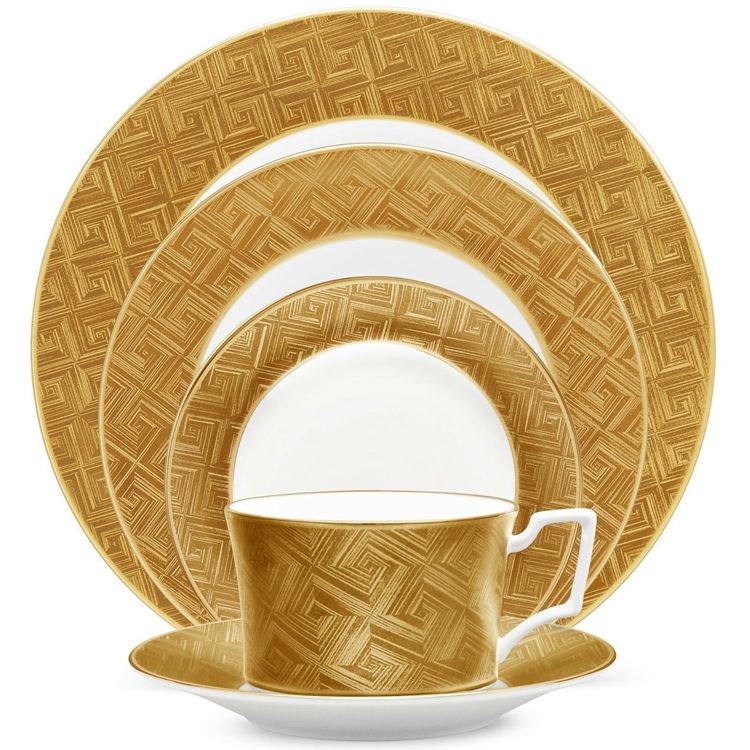
This beautiful Noritake china set consists of 60 pieces, including tea cups and plates, and features a unique gold design that captures the viewer’s interest instantly! The set adopts a bold design relative to other competing china patterns. The set is currently up for grabs on eBay for a price of $1,920.
Frank Lloyd Wright Noritake China
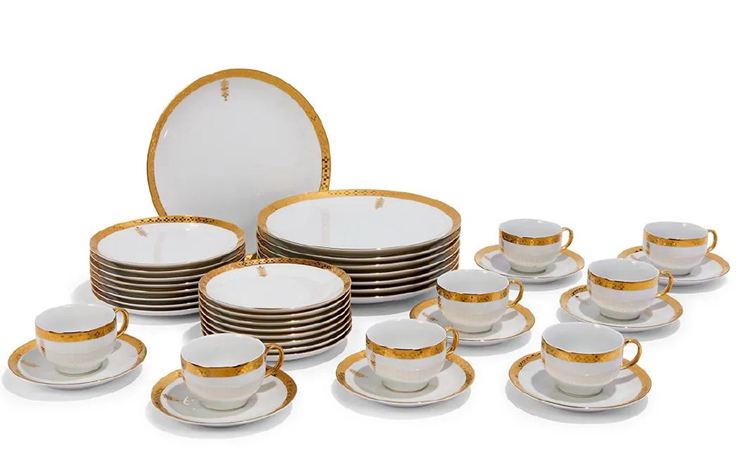
Frank Lloyd Wright, an American designer, was known for the plenty of impressive Noritake china designs that he introduced into the market. One of his most famous works was this china dinner set consisting of dinner plates and tea cups. This set is a part of the well-known Imperial Hotel Collection for 1990 in Japan. The set was sold for $4,000 in an auction.
Hanakinsai Yuri
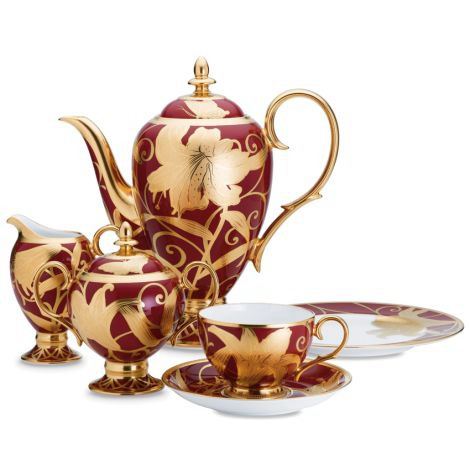
The Hanakinsai Yuri pattern is quite similar to the Hanaginsai Yuri discussed earlier with the only prominent difference being the color palette used in each pattern. This pattern makes use of a much bolder color scheme with gold decorations on a red base color giving the pieces a unique and impressive appearance. The entire Hanakinsai Yuri collection is up for grabs on the official Noritake china website for a price of $4,740. Individual pieces belonging to this set can be purchased separately for their corresponding prices; coffee server for $2250, Creamer for $1250, Cup for $625, and salad plate for $625.
Frank Lloyd Wright Imperial Hotel Dinnerware
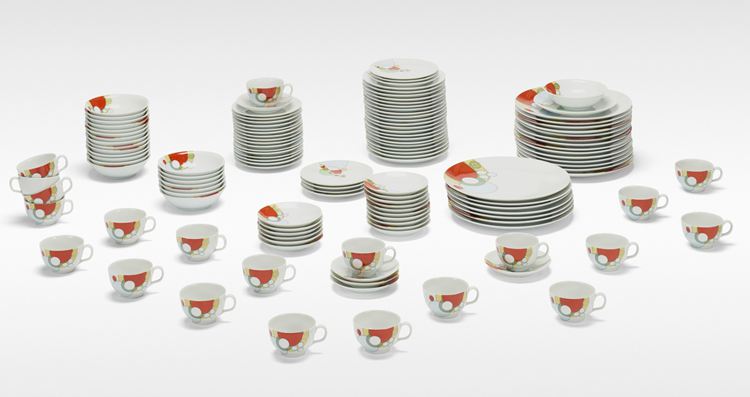
This is another renowned design produced by Frank Lloyd for the Imperial Hotel, Tokyo, back in 1922. This is arguably one of the rarest and most valuable works of Frank Lloyd in the field of Noritake china, primarily because of its historical importance. The set consists of 21 dinner plates, 23 dessert plates, 23 bowls, 22 salad plates, and 21 teacups with saucers. Any Noritake item belonging to this set has the ‘Noritake Nippon Toki Kaisha Japan’ mark under it. The set is currently for sale online for a whopping price of $16,250, easily making it the most expensive Noritake china set on this list.
Noritake China Value Guide
It is essential for collectors and traders to learn how to assess the worth of any particular china piece whether they’re looking to buy or sell Noritake china pieces. Ideally, you are highly suggested to get an expert opinion while determining the value of Noritake china pieces; however, we’ve got some tips that can assist you in doing so yourself.
When trying to estimate the worth of a Noritake china piece, you need to pay close attention to certain factors that are eventually responsible for determining its value. Here are some of the most significant factors that affect the value of Noritake china.
Condition
The condition of a Noritake china piece is the first thing any buyer or dealer checks for when choosing to buy the piece. Naturally, the condition of the piece plays a major role in determining its value in the market. If the piece has been stored properly over time with little wear and tear, then it is likely to be valued higher for collectors. Alternatively, if a piece has chips that significantly compromise its visual appeal, then it will certainly be priced lower than expected.
Age
How old or antique your china piece is can significantly boost or drop its value in the market. Most Noritake china pieces come with their manufacturing date stamped on their backs, making it incredibly easy for individuals to determine their age and ultimately, their expected value by taking a look at other pieces with similar ages.
Rarity
The rarest Noritake china pieces are also the oldest ones that were procured by the company. This makes it much more difficult for collectors to get their hands on old pieces, which in turn boosts their value in the market. Rarity can also be determined by identifying how many of the pieces were originally produced in the set by simply taking a look at the stamps underneath the piece.
For further clarification, here are some sold examples of Noritake china pieces.
- This NORITAKE china ROYAL HUNT 3930 pattern Coffee Pot & Lid – 9-3/8″ sold for $50.00
- This 15pc Lot Vintage 1950’s Noritake China “Elaine” Pink Flower Polka Dot Rim MINT sold for $79.95
- This Vintage Noritake Bone China Pacific Majesty Coffee Set sold for $90.00
Takeaway
Noritake china continues to be one of the most valuable and precious chinas in the pottery industry with great importance for collectors and traders. With such an incredible variety of shapes and patterns out there, you will certainly not get bored while building your own Noritake china collection.
With that said, what are you waiting for? Go and get started with collecting rare and intriguing Noritake china pieces. If you have any questions, be sure to let us know in the comment section below.

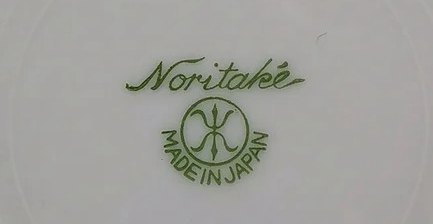
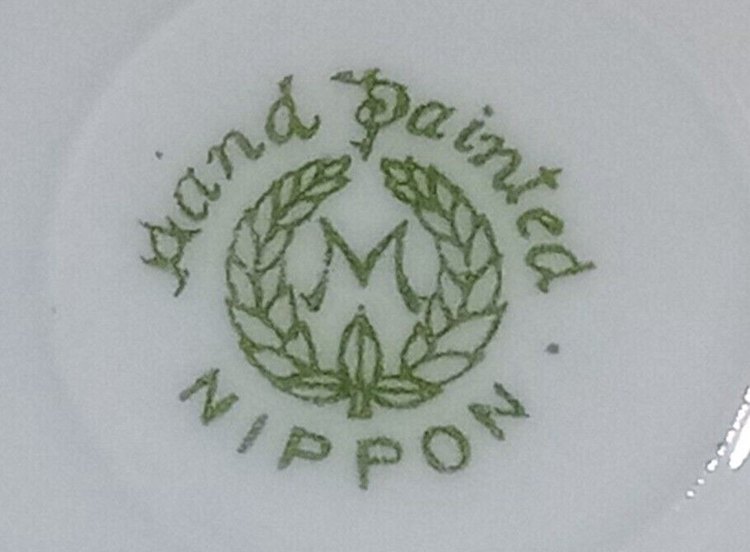




![Where To Sell Antique Furniture In 2022 [Ultimate Guide]](https://www.jacquelinestallone.com/wp-content/uploads/2022/09/Etsy-Your-Place-To-Buy-And-Sell-All-Things-Handmade-600x450.jpg)


